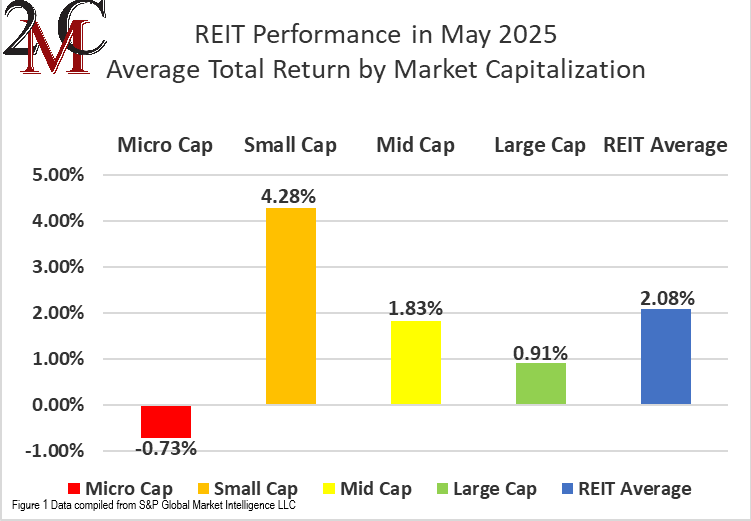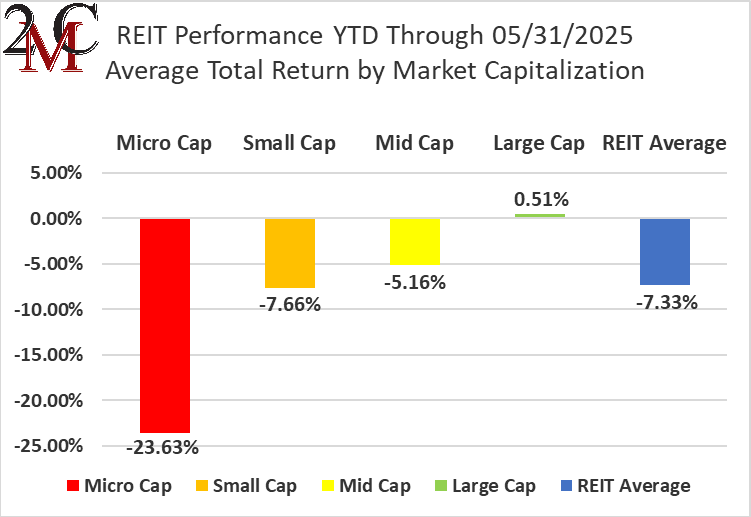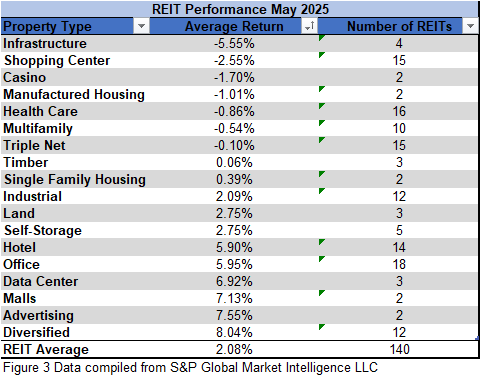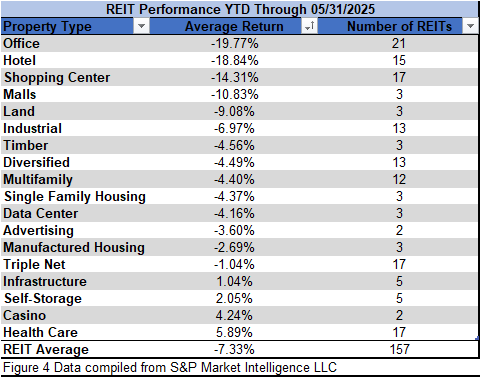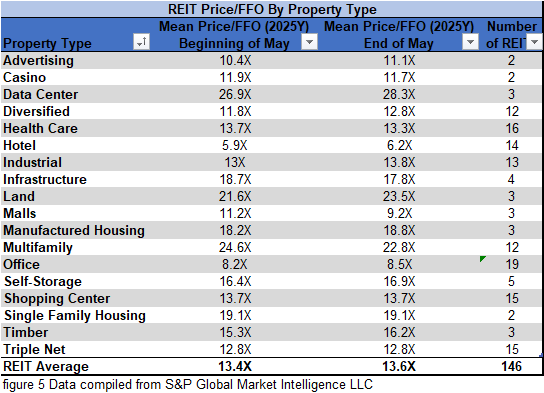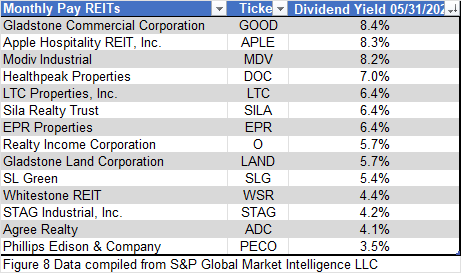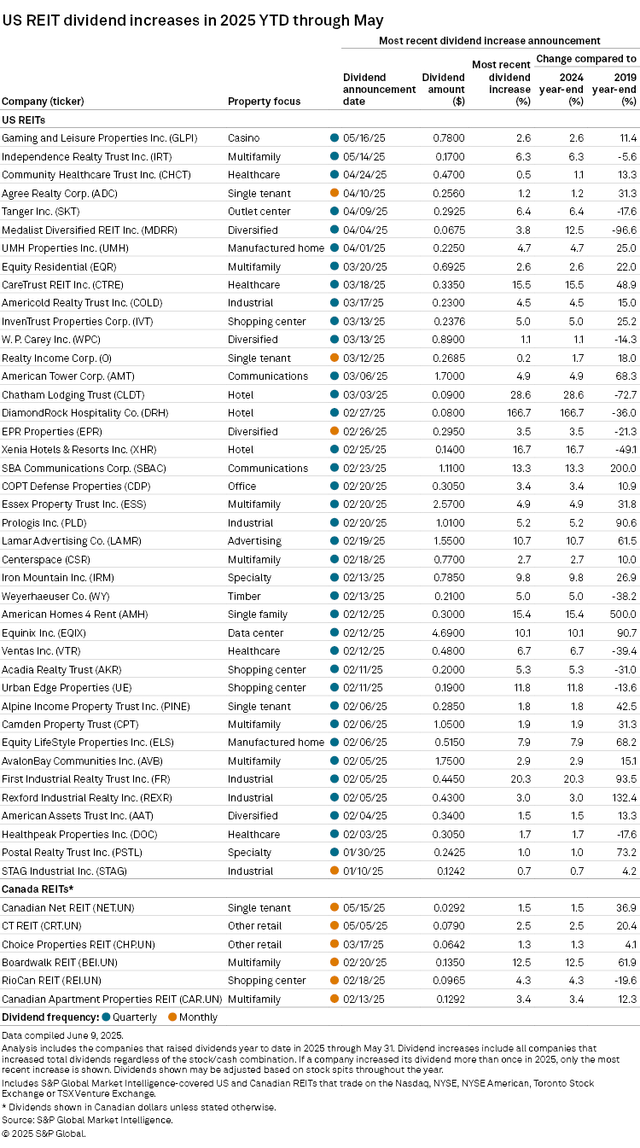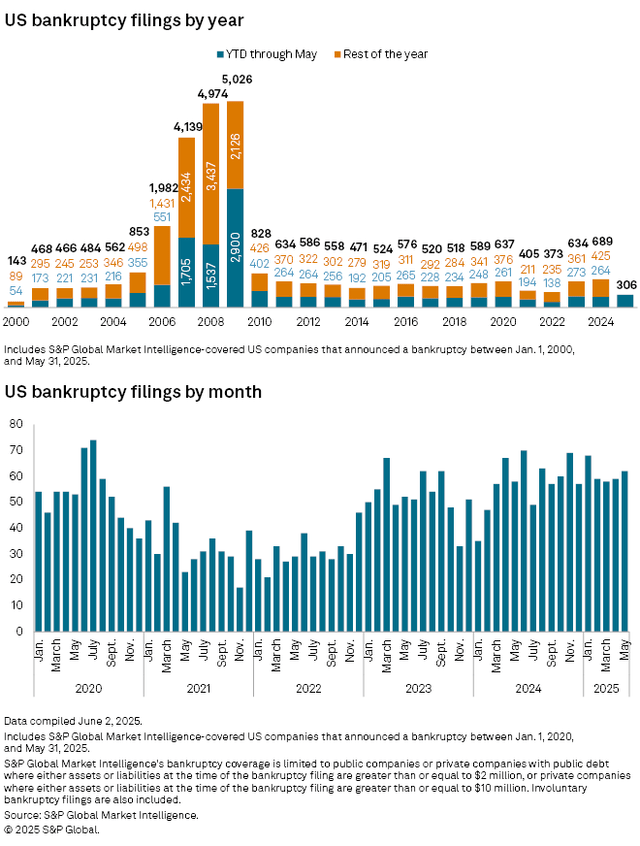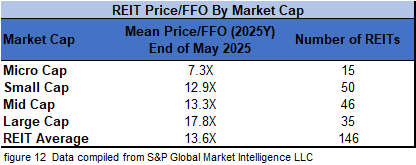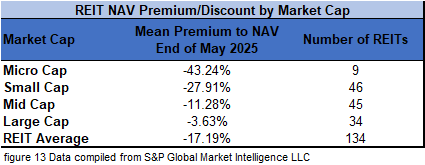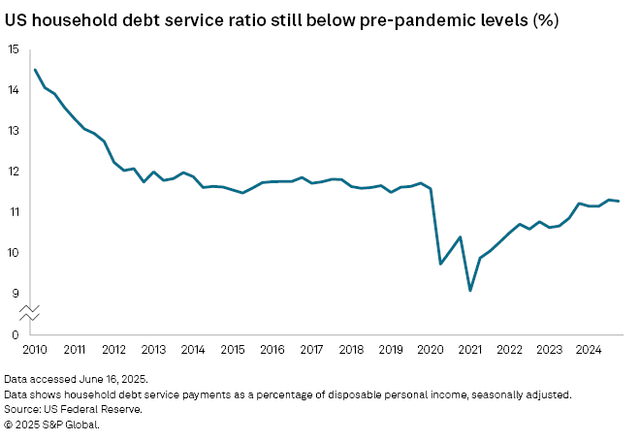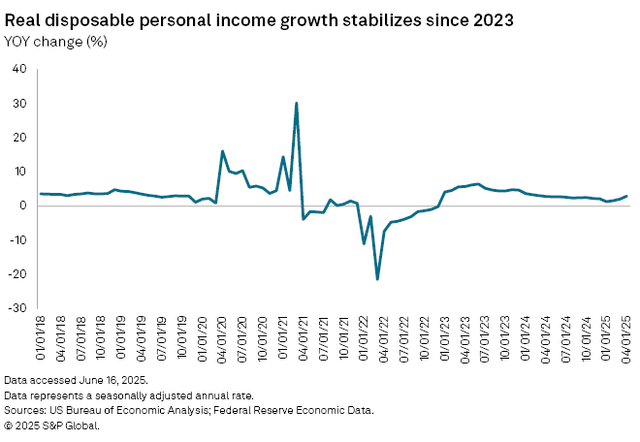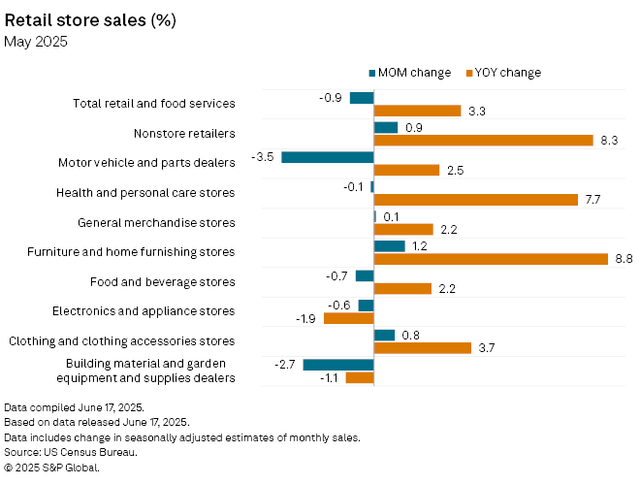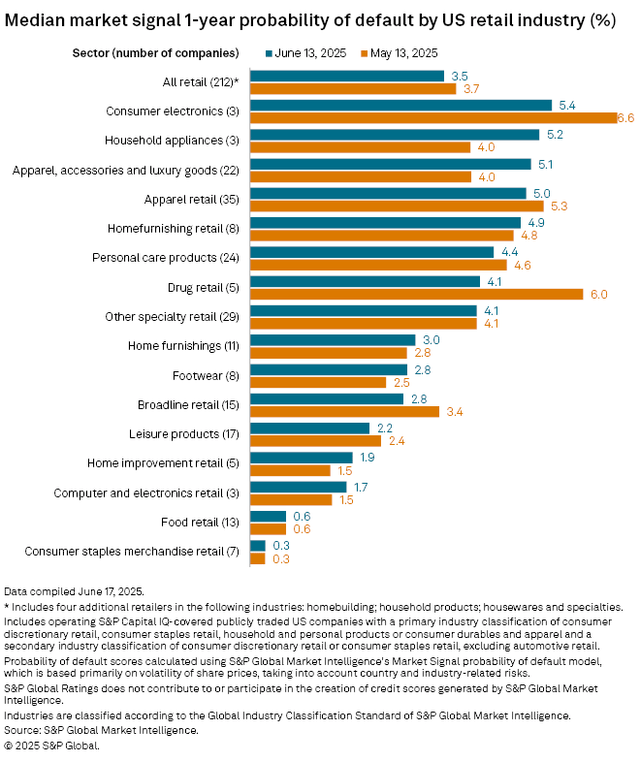The State of REITs: June 2025 Edition
- REITs saw a month of recovery in May (+2.08%), but still have a long way to go to get back into the black in 2025 with an average -7.33% return YTD.
- Micro cap REITs (-0.73%) continued to struggle, while small caps (+4.28%), mid caps (+1.83%) and large caps (+0.91%) saw gains.
- 58% of REIT securities had a positive total return in May.
- 61% of REIT property types averaged a positive total return in May. Infrastructure (-5.55%) and Shopping Center REITs (-2.55%) struggled, while Diversified (+8.04%) and Advertising REITs (+7.55%) led the sector.
- The average REIT NAV discount narrowed from -18.93% to -17.89% during May. The median NAV discount also narrowed from -22.07% to -20.32%.
REIT Performance
After back-to-back months in the red, REITs rebounded in May with a solid +2.08% average total return. However, the REIT sector’s gains fell far short of the broader market with strong gains from the Dow Jones Industrial Average (+4.2%), S&P 500 (+6.3%) and NASDAQ (+9.6%). The market cap weighted Vanguard Real Estate ETF (VNQ) fell short of the average REIT in May (+1.12% vs. +2.08%), but has handily outperformed year-to-date (+1.31% vs. -7.33%). The spread between the 2025 FFO multiples of large cap REITs (17.8x) and small cap REITs (12.9x) widened in May as multiples expanded 0.3 turns for large caps but held steady for small caps. Investors currently need to pay an average of 38% more for each dollar of FFO from large cap REITs relative to small cap REITs. In this monthly publication, I will provide REIT data on numerous metrics to help readers identify which property types and individual securities currently offer the best opportunities to achieve their investment goals.
Micro cap REITs (-0.73%) continued to underperform their larger peers for the 7th straight month. Small caps (+4.28%) outperformed, followed by mid caps (+1.83%) and large caps (+0.91%) in May. During the first five months of 2025, large cap REITs have outperformed small caps by 817 basis points.
11 out of 18 Property Types Averaged Positive Returns in May
61.11% of REIT property types averaged a positive total return in May. There was a 13.6% total return spread between the best and worst performing property types. Diversified (+8.04%) and Advertising (+7.55%) were the best performing property types in May. Infrastructure (-5.55%) and Shopping Center REITs (-2.55%) underperformed.
Even after solid gains in May, Office (-19.77%) and Hotel REITs (-18.84%) remain the worst performing REIT property types year-to-date. Despite underperforming in May, Health Care (+5.89%) and Casinos (+4.24%) remain the best performing property types thus far in 2025.
The REIT sector as a whole saw the average P/FFO (2025Y) increase 0.2 turns in May from 13.4x up to 13.6x. 50% of property types averaged multiple expansion, 33.3% averaged multiple contraction and 16.7% saw multiple hold steady in May. Data Centers (28.3x), Land (23.5x), Multifamily (22.8x), Single Family Housing (19.1x) and Manufactured Housing (18.8x) currently trade at the highest average multiples among REIT property types. Hotels (6.2x), Office (8.5x) and Malls (9.2x) are the only property types that average single digit FFO multiples.
Performance of Individual Securities
Paramount Group (PGRE) (+41.03%) had a rough start to the year, declining -13.18% over the first 4 months of 2025, but surged deep into positive territory in May. After market close on April 30th, PGRE posted an earning beat that included raised guidance for 2025 leasing activity and occupancy. PGRE then also announced on May 19th that it will be conducting a review of strategic opportunities to maximize shareholder value.
May’s share price collapse of Office Properties Income Trust (OPI) (-52.93%) was narrowly worse than that of perpetually freefalling Wheeler REIT (WHLR) (-50.56%), which has led the REIT sector downward most months of 2025. After market close on April 30th, OPI posted dismal earnings which showed a significant year-over-year decline in both FFO/share and occupancy. Increased cost of debt service and a spike in tenant lease non-renewals drove the poor results.
62.58% of REITs had a positive total return in May. REITs have averaged a -7.33% year-to-date total return in 2025, which slightly trails the -5.45% return for the REIT sector over the first 5 months of 2024.
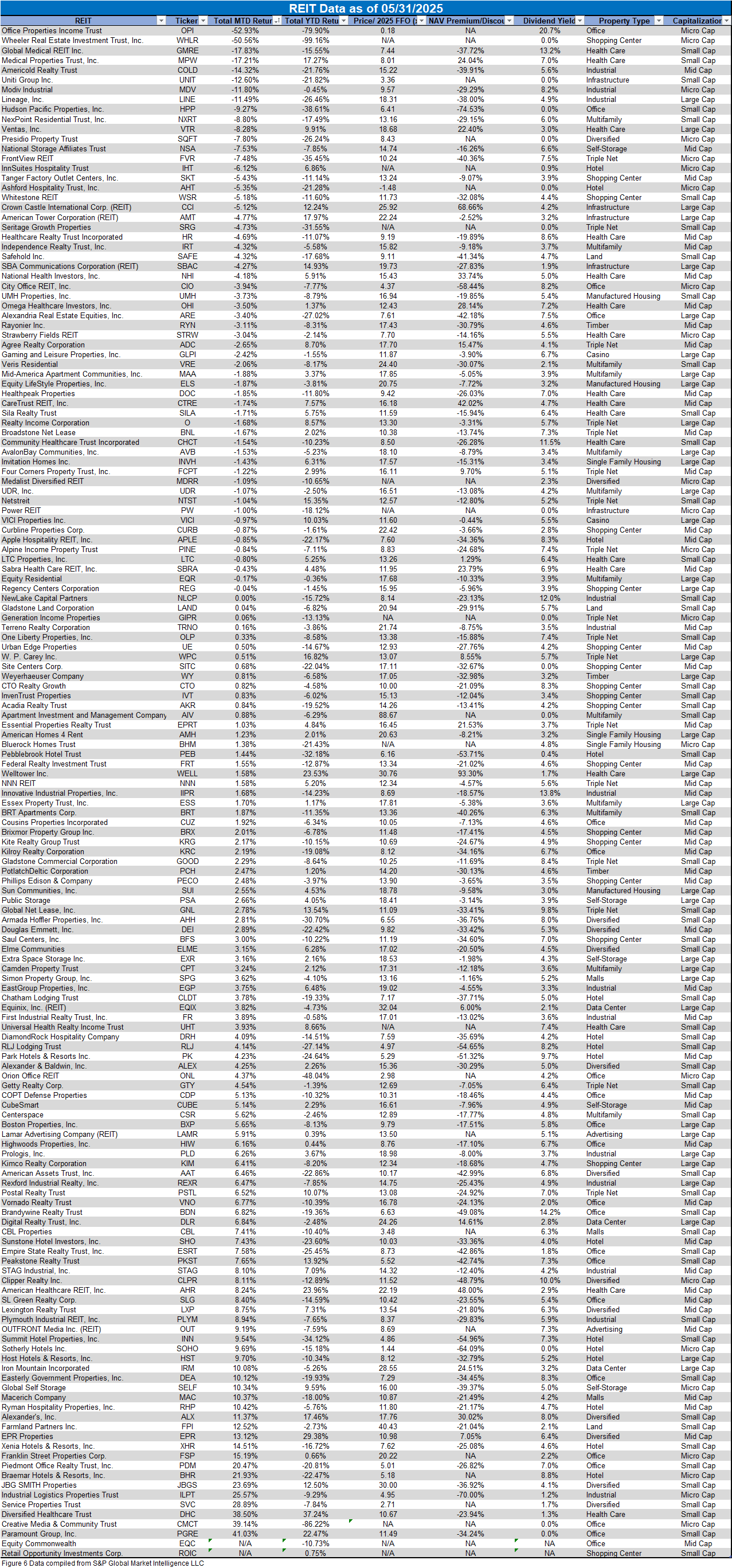
Dividend Yield
Dividend yield is an important component of a REIT’s total return. The particularly high dividend yields of the REIT sector are, for many investors, the primary reason for investment in this sector. As many REITs are currently trading at share prices well below their NAV, yields are currently quite high for many REITs within the sector. Although a particularly high yield for a REIT may sometimes reflect a disproportionately high risk, there exist opportunities in some cases to capitalize on dividend yields that are sufficiently attractive to justify the underlying risks of the investment. I have included below a table ranking equity REITs from highest dividend yield (as of 5/31/2025) to lowest dividend yield.

Although a REIT’s decision regarding whether to pay a quarterly dividend or a monthly dividend does not reflect on the quality of the company’s fundamentals or operations, a monthly dividend allows for smoother cash flow to the investor. Below is a list of equity REITs that pay monthly dividends ranked from highest yield to lowest yield.
Economic Health
The number of corporate bankruptcies remained elevated and increased month over month in May. There were more filings year-to-date in 2025 than in the first 5 months of any other year since 2010. There have been 15.9% more bankruptcy filings over the first 5 months of 2025 than during the same period in 2024.
Valuation
REIT Premium/Discount to NAV by Property Type
Below is a downloadable data table, which ranks REITs within each property type from the largest discount to the largest premium to NAV. The consensus NAV used for this table is the average of analyst NAV estimates for each REIT. Both the NAV and the share price will change over time, so I will continue to include this table in upcoming issues of The State of REITs with updated consensus NAV estimates for each REIT for which such an estimate is available.

Takeaway
The large cap REIT premium (relative to small cap REITs) widened in May and investors are now paying on average about 38% more for each dollar of 2025 FFO/share to buy large cap REITs than small cap REITs (17.8x/12.9x – 1 = 38.0%). As can be seen in the table below, there is presently a strong positive correlation between market cap and FFO multiple.
The table below shows the average NAV premium/discount of REITs of each market cap bucket. This data, much like the data for price/FFO, shows a strong, positive correlation between market cap and Price/NAV. The average large cap REIT (-3.63%) trades at a single-digit discount to consensus NAV and mid cap REITs (-11.28%) trade at a low double-digit discount. Small cap REITs (-27.91%) trade at just under 3/4 of NAV while micro caps (-43.24%) trade at the deepest average discounts to their respective NAVs.
Despite Uncertainty Surrounding Trade, Economic Growth and the Timeline of Fed Rate Cuts, Retail Data is Encouraging
Massive Covid-era stimulus and mortgage refinances drove household debt service ratios sharply lower in 2020. This ratio has since largely rebounded, but remains lower than the stabilized pre-pandemic level. Despite record credit card debt and record total household debt in Q4 2024, the household debt service ratio remains fairly healthy due to household income gains.
Real disposable personal income growth steadily declined throughout 2023 and 2024, but has reaccelerated in 2025. An increase in disposable personal income provides consumers with the opportunity to spend more on goods and services, which is a very encouraging sign for potentail gains in retail spending through the remainder of the year. Favorable trends in retail spending facilitate strong leasing for Retail REIT landlords with potential gains in occupancy and rent per square foot on new and renewal leases.
May saw a disappointing -0.9% month-over-month decline in retail store sales, but year-over-year growth of +3.3% in retail and food service store sales. Monthly spending data in May may have been impacted by consumers stocking up in prior months ahead of the implementation of substantial tariffs. Furniture and home furnishing stores (+8.8%) and health and personal care stores (+7.7%) saw particularly strong year-over-year growth. The only categories to struggle were electronics and appliance stores (-1.9%) and building material and garden equipment and supplies dealers (-1.1%).
With some retail fundamentals showing signs of improvment, retail default risk saw an encouraging decline between mid-May (3.7%) and mid-June (3.5%). There were particularly strong improvements in drug retail (6.0% to 4.1%) and consumer electronics (6.6% to 5.4%). The retail segments with the lowest default risk were consumer staples merchandise retail (0.3%) and food retail (0.6%).
While retail real estate in general has multiple tailwinds that could benefit profitability and valuation over upcoming years, the outlook is even better for some retail REITs. REITs typically own higher quality assets with a higher percent of creditworthy tenants. Many retail REITs are also trading at significant discounts to net asset value, allowing for an attractive entry point. However, there is significant variance among retail REITs regarding quality of balance sheet, earnings growth and tenant quality. As a result, it is essential for investors to either do their own due diligence before selecting which REITs to invest in or to hire an investment advisor who is capable of high quality REIT research and analysis.
Important Notes and Disclosure
All articles are published and provided as an information source for investors capable of making their own investment decisions. None of the information offered should be construed to be advice or a recommendation that any particular security, portfolio of securities, transaction, or investment strategy is suitable for any specific person. The information offered is impersonal and not tailored to the investment needs of any specific person.
We cannot determine whether the content of any article or recommendation is appropriate for any specific person. Readers should contact their financial professional to discuss the suitability of any of the strategies or holdings before implementation in their portfolio. Research and information are provided for informational purposes only and are not intended for trading purposes. NEVER make an investment decision based solely on the information provided in our articles.
We may hold, purchase, or sell positions in securities mentioned in our articles and will not disclose this information to subscribers, nor the time the positions in the securities were acquired. We may liquidate shares in profiled companies at any time without notice. We may also take positions inconsistent with the information and views expressed on our website.
We routinely own and trade the same securities purchased or sold for advisory clients of 2MCAC. This circumstance is communicated to our clients on an ongoing basis. As fiduciaries, we prioritize our clients’ interests above those of our corporate and personal accounts to avoid conflict and adverse selection in trading these commonly held interests.
Past performance does not guarantee future results. Investing in publicly held securities is speculative and involves risk, including the possible loss of principal. Historical returns should not be used as the primary basis for investment decisions. Although the statements of fact and data in this report have been obtained from sources believed to be reliable, 2MCAC does not guarantee their accuracy and assumes no liability or responsibility for any omissions/errors
Commentary may contain forward-looking statements that are by definition uncertain. Actual results may differ materially from our forecasts or estimations, and 2MCAC and its affiliates cannot be held liable for the use of and reliance upon the opinions, estimates, forecasts, and findings in this article.
Through October 2021, The State of REITs was published exclusively on Seeking Alpha by Simon Bowler, Sector Analyst at 2nd Market Capital Services Corporation (2MCSC). Editions subsequent to October 2021 will be published on this website in addition to other platforms that may include Seeking Alpha. 2MCSC was formed in 1989 and provides investment research and consulting services to the financial services industry and the financial media. 2MCSC does not provide investment advice. 2MCSC is a separate entity but related under common ownership to 2nd Market Capital Advisory (2MCAC), a Wisconsin registered investment advisor. Simon Bowler is an investment advisor representative of 2MCAC. Any positive comments made by others should not be construed as an endorsement of the author's abilities to act as an investment advisor.
S&P disclosure: S&P Global Market Intelligence LLC. Contains copyrighted material distributed under license from S&P.
Discover more from 2nd Market Capital Advisory Corp
Subscribe to get the latest posts sent to your email.
